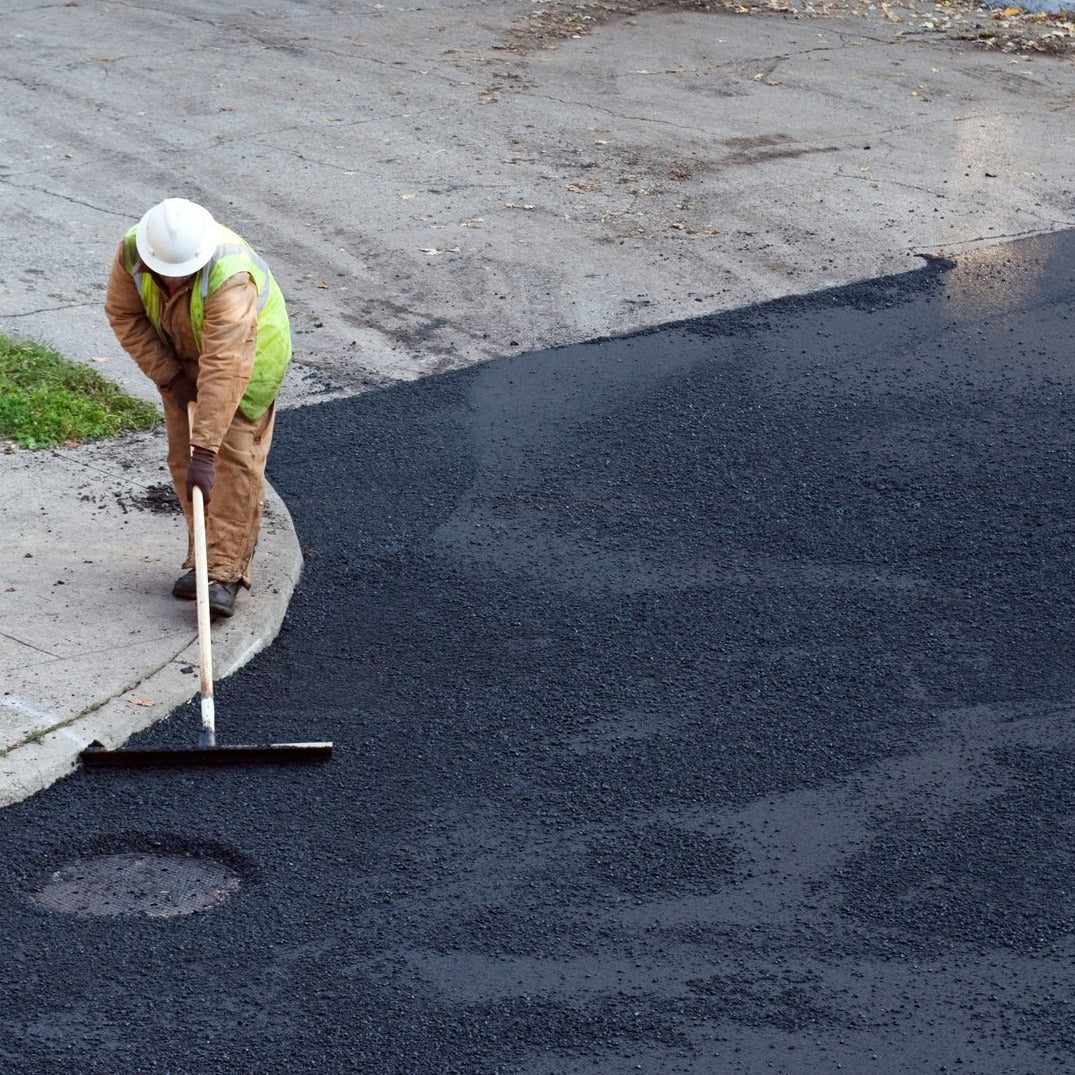Hot Mix Asphalt Paving: Elevating Commercial Parking Lot Requirements
Wiki Article
Opening the Tricks of Hot Mix Asphalt Technology
Checking out the midsts of warm mix asphalt technology reveals a world where precise processes and accurate solutions converge to shape our roads and framework. The combination of accumulations, binders, and fillers isn't just a building and construction job but a strategic orchestration of toughness and performance. As we peer into the complex dancing of elements, a tapestry of durability and sustainability unfolds. What lies below this surface area of asphaltic mastery, and what keys wait to be unveiled in the realm of paving innovations?Importance of Warm Mix Asphalt
Hot Mix Asphalt plays a crucial duty in contemporary facilities growth because of its durability and cost-effectiveness. As the most generally utilized leading product for roads, freeways, and car park, Warm Mix Asphalt uses an array of advantages that contribute to its value in construction projects. One vital benefit is its capacity to endure rush hour tons and extreme weather conditions, supplying a durable and reputable surface for transport networks. Furthermore, Warm Mix Asphalt is economical in both initial building and construction and lasting maintenance, making it a recommended option for lots of facilities jobs.The toughness of Warm Mix Asphalt stems from its structure, which includes accumulations, binder, and filler products that are very carefully chosen and mixed to satisfy particular performance requirements. Overall, the relevance of Hot Mix Asphalt in infrastructure development can not be understated, as it proceeds to be a cornerstone of modern-day construction techniques.
Parts of Asphalt Mixes
The composition of asphalt mixes includes carefully selected accumulations, binder, and filler materials that are crucial for accomplishing specific efficiency needs. Aggregates are the key component of asphalt mixes, providing stamina and security. These aggregates can be all-natural, such as crushed rock or crushed rock, or artificial, like recycled materials from old sidewalks. The binder, usually bitumen or asphalt cement, holds the accumulations together and provides versatility and resilience to the mix. The option of the binder is essential as it straight influences the mix's efficiency in various climate condition. Fillers, such as moisturized lime or Rose city concrete, are used to enhance the mix's workability and aging resistance. Angled Parking.The combination and proportion of these elements play a considerable function in figuring out the top quality and efficiency of the asphalt mix. Designers very carefully make the mix to fulfill specific needs, taking into consideration factors like traffic quantity, environment problems, and pavement life expectancy. Correct option and harmonizing of accumulations, binder, and fillers are necessary for producing long lasting, resilient asphalt pavements.
Mixing and Manufacturing Techniques

As soon as the accumulations are chosen, the binder, usually asphalt cement, is included in bind the materials together. The binder's high quality and amount substantially influence the mix's resistance, adaptability, and toughness to ecological aspects. Furthermore, pop over here fillers like hydrated lime or Portland concrete might be integrated to improve particular attributes of the asphalt mix, such as its workability or wetness resistance.
During manufacturing, the accumulations and binder are heated up, usually in between 250-325 ° F(121-163 ° C ), to promote mixing and guarantee proper finish of the accumulations. The mixing procedure has to be complete to accomplish a homogeneous combination that advertises the preferred efficiency features of the asphalt. Different techniques, such as set mixing or drum blending, are utilized to achieve regular and high-quality asphalt mixes for construction tasks.
Elements Affecting Asphalt Efficiency
find more Aspects affecting asphalt performance include an array of variables that affect the resilience, durability, and total quality of asphalt pavements. One crucial variable is the quality of materials utilized in the asphalt mix.
Ecological problems also affect asphalt performance. Temperature level variations, wetness seepage, and web traffic lots can all affect the architectural integrity of the sidewalk. Style considerations, such as pavement thickness and drainage, are crucial in making sure the long-lasting performance of the asphalt sidewalk. By very carefully thinking about these specialists, designers and variables can optimize asphalt performance and improve the solution life of pavements.
Sustainable Practices in Asphalt Technology

WMA allows for the manufacturing and placement of asphalt blends at reduced temperature levels contrasted to standard hot-mix asphalt, resulting in minimized power consumption and greenhouse gas discharges. The usage of porous asphalt blends can aid reduce stormwater overflow concerns by permitting water to useful content penetrate via the pavement and right into the ground, promoting natural water purification and reenergize processes.
Final Thought
In conclusion, warm mix asphalt innovation plays a crucial function in contemporary framework growth due to its resilience and cost-effectiveness. By very carefully stabilizing elements, utilizing appropriate mixing methods, and thinking about different elements, engineers can develop high-quality asphalt blends that endure hefty traffic tons and harsh climate problems. Accepting lasting techniques, such as using warm-mix innovations and recycled products, additionally enhances the ecological kindness of asphalt innovation.
Mixing and production techniques in hot mix asphalt innovation entail the exact combination and handling of accumulations, binder, and fillers to create a resilient and high-performance asphalt mix.Elements influencing asphalt efficiency include a range of variables that impact the sturdiness, longevity, and overall high quality of asphalt pavements. Lasting techniques in asphalt technology incorporate different campaigns aimed at reducing the ecological effect of asphalt manufacturing and paving processes. By incorporating redeemed asphalt sidewalk (RAP) and recycled asphalt roof shingles (RAS) into new asphalt mixes, the industry can dramatically lower the usage of raw products and energy, while likewise reducing landfill waste.
WMA allows for the manufacturing and placement of asphalt mixes at lower temperatures contrasted to conventional hot-mix asphalt, resulting in lowered energy usage and greenhouse gas exhausts.
Report this wiki page